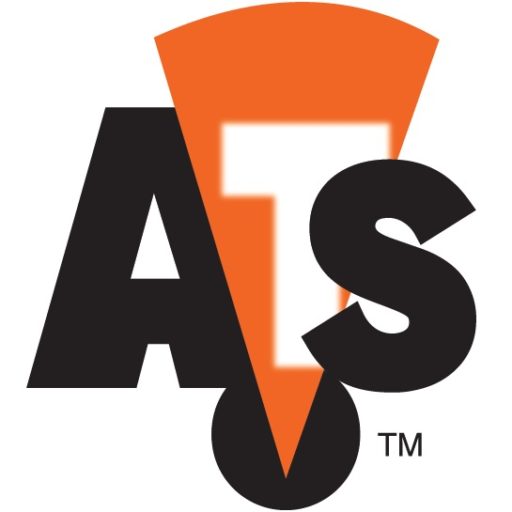(VIDEO SCRIPT)
Hey there Everybody, Bob Craft here, for Advanced Technology Solutions.
Today I want to talk about the true value of Condition Monitoring and Evaluation and the challenge we have trying to put a value on something that hopefully didn’t happen. This topic was motivated by experiences that I think most if not all of us have had, probably more times than we care to count. We perform inspections, gather and evaluate data on the machines we’re responsible for and discover a problem that will require some level of action to correct. So, what do we do?
We go into the maintenance superintendent’s office and basically get tossed out with a tirade of insults culminating with something like
“Don’t you go bragging about saving that machine – ‘cause you didn’t save me nuthin! You just caused me to do work that I wasn’t planning on doing, costing me and my department time and money!”
You never get any gratitude from the folks you just told need to go do something!
Condition monitoring, when done right, is a Planning Tool. It helps us by identifying machinery and systems that need some sort of attention, with the sole purpose of avoiding Functional Failure during production. Oh sure, it does provide valuable data to support root cause failure analysis when something bad does happen, but the primary purpose is to help avoid functional failure. The attention needed could be anything from a minor operational adjustment or tweak, like with cooling flow for example, lubricant replenishment or replacement, or some kind of maintenance action like an overhaul, replacement or repair.
So we need to define what functional failure really means. It’s not necessarily a total catastrophic machine failure with bits of metal flying around the room like a bomb went off. Rather, it can be more generically defined as having any of a number of specific attributes, that sometimes manifest themselves while the machine continues to run. To my way of thinking, a machine has functionally failed if it cannot perform its function:
On Demand
At Capacity
Or Within Quality standards. It isn’t helpful if it’s running but making junk parts.
Political correctness these days requires adding:
Safely
Environmentally and
Economically.
But without these last 3, the whole plant probably wouldn’t be running.
The Big 3 for our purposes today are
On Demand,
At Capacity,
and Within Quality Standards.
‘Cause without these 3, you’ve got nothing!
When it comes to value, don’t think in terms of the difference between an internal component replacement or repair versus a whole machine changeout. That’s all nickel/dime in the grand scheme of things, unless something really catastrophic happens.
Think in terms of the COST CONSEQUENCES of an unexpected, machine failure in service, right in the middle of a full production run. When I say unexpected, I mean neither planned nor scheduled. The cost consequences of the lost productivity far outweigh the cost to repair or replace the machine or some of its components, in nearly all cases.
Most industries have a certain amount of downtime planned, scheduled and budgeted for maintenance activities. The terminology varies, but think in terms of scheduled outages, turn-arounds or maintenance availabilities. But don’t forget what could be done during “shutdowns of opportunity” or “Forced Outages” in power generation speak. These also become times when corrective measures could be taken on machinery to reduce the risk of functional failures.
I’ve got some examples that have been shared with me over the years. I’m allowed to use these numbers but not allowed to say exactly what company provided them to me, or when, so don’t even ask!
All of these examples are from events that actually happened, although in most cases, they didn’t share with me how long they were down, which is why several only show time based numbers.
A pump failure in a single stream mineral processing facility: $3,200/second
Worthy of note is the fact that for the last 25 years, saving on the capital investment in new facilities has resulted in many being constructed with no built-in redundancy. This gives the possibility that ANY machine that fails could bring the entire process down, even a small pump similar to what’s in your washing machine at home.
A large base load power plant unexpectedly off the grid for a week due to failure of a supporting pump, $13.8 million dollars at what was then the wholesale price for electricity.
The cost of a large power plant boiler restart from cold iron: $300,000. This is just restarting the boiler to get to the point where steam can flow to the turbine. No power yet being produced.
An overhead crane failure at a steel mill that prevented finished product from being removed from the end of the line: $235,000/hour
Restarting a cement kiln, also from cold iron: $75,000
Cargo ship at the dock longer than scheduled: $40,000/hour
And finally, a paper machine dryer roll bearing failure during production: $160,000 lost production output per event.
There’s something else that’s very important to know about 6 of these 7 events. Management – in all 6 cases after the fact – recognized that if they had Condition Monitoring systems installed and practices in place that they would have recognized these situations well in advance of the failures and had the opportunity to get them corrected during recent previous maintenance availabilities, had they been aware. It spoke volumes to me just hearing that admission, after all 6 of these totally independent situations.
The other one, and again I can’t say which one it was, is the saddest because not 1 but 2 independent condition monitoring technologies clearly identified the problem early enough to avoid the total shutdown, but Management would not approve the corrective action plan that had been developed. Had they followed the analysts’ recommendations, the total lost revenue would have been less than 10% of what they actually experienced.
This is what ATS does for our Customers every day.
We focus on your condition monitoring needs with the right instrumentation and expertise to help you understand the operating condition of your production and support systems and provide you with recommendations that will help keep your production up and running.
Remember, when Condition Monitoring finds a problem with a machine, it’s pretty much guaranteed that its days are numbered. It’s not a question of if, it’s a question of when the bad thing happens. How you react to it, makes all the difference. Let me paraphrase a famous movie line and say “how lucky do you feel?”
But let’s be real. Sometimes issues with machinery and systems arise where there isn’t time to get the corrective action scheduled into an already planned maintenance availability, and near immediate action has to be taken. Given that a problem exists, coming down is inevitable. But wouldn’t you prefer to bring things down in a clean, controlled manner rather than having to react to a sudden unexpected failure, with all of the additional clean-up and loss of raw and in-process materials?
The bottom line for me is that the value of what Condition Monitoring provides is the confidence in the productivity that it enables. It is a 2 step calculation.
First,
Think in terms of the lost production revenue consequences of unexpected failure per hour,
multiply it by the contribution factor of the machine in question
and multiply again by the expected duration that production would have been down if the machine had failed. This becomes your cost of lost productivity.
Just remember that for a single stream facility with no built-in redundancy, every machine’s contribution factor is 100%. If 2 machines do the same job and both are required for full production, then each machine’s contribution factor is 50%.
Second,
Consider the cost of irrecoverable scrap material within the system,
raw material that goes bad and
in-process material that won’t meet specs for downstream use
Add these together and this, is the credit you should take for the real value of condition monitoring.
I can pretty much guarantee you that the cost of actually doing the job when properly planned and scheduled is insignificant when compared to the cost consequences of lost productivity if the system goes down unexpectedly during a production run.
This is why ATS’ motto is Solutions Before Problems!
One day many years ago, I was eating lunch by myself in the plant cafeteria, when the plant manager sat down with me.
He says to me “Hey Bob, it’s been so long since I’ve heard from you, I was wondering if you still even worked here!”
We laughed and I reminded him that we were monitoring more machines than ever before and our program is finding things soon enough that we can schedule the corrective action for upcoming planned plant and system level outages with essentially no impact on our production goals.
He got real pensive looking, thought for a couple seconds, decided he was happy, and bought me an ice cream for dessert!
That’s it for today.
Stay safe out there, and please, make sure that when you leave to go home at the end of your shift, you do so with all of your body parts intact.
Bye for now.






0 Comments